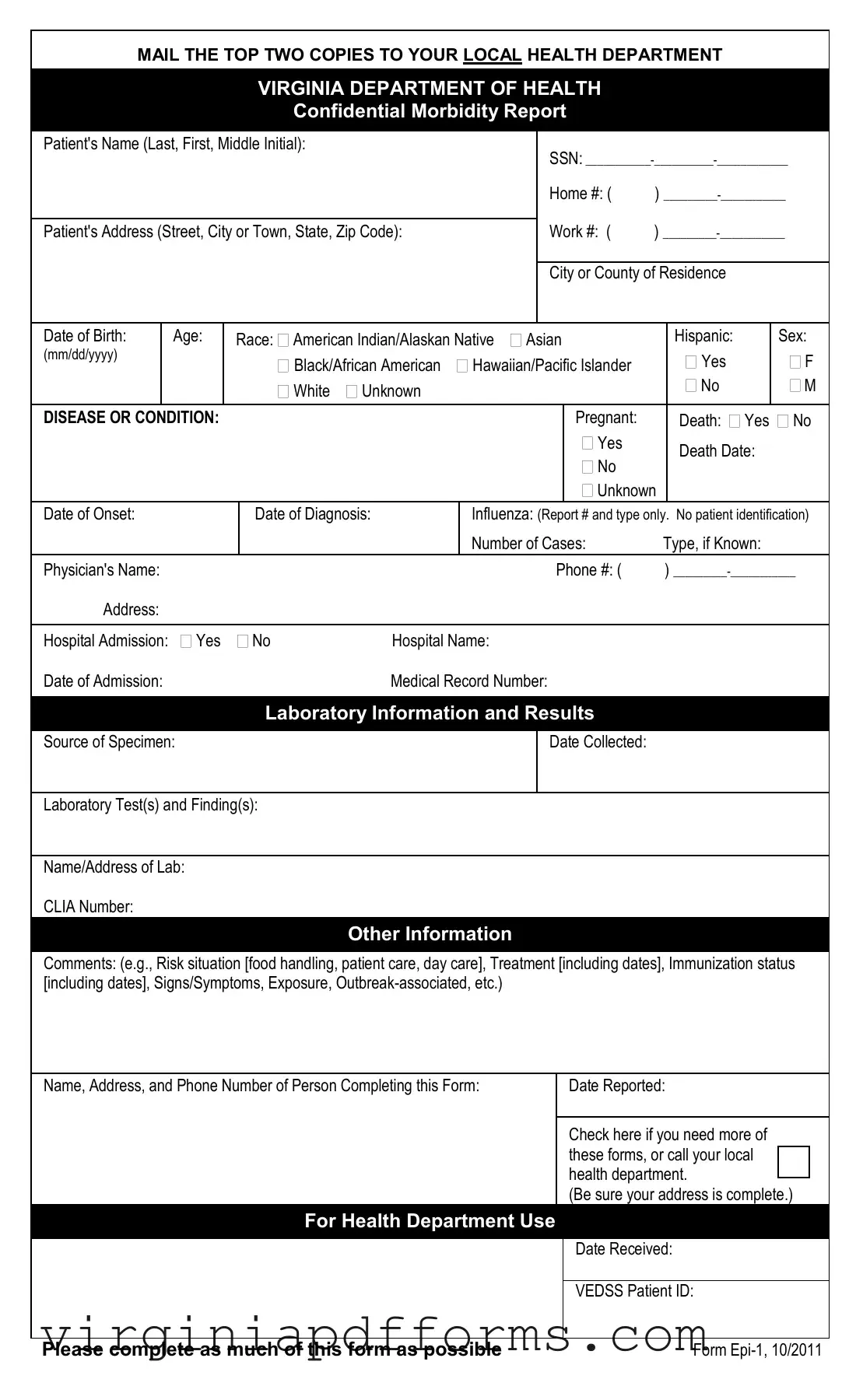Fill in a Valid Virginia Epi 1 Template
The Virginia Epi 1 form is a crucial document used for reporting various diseases and conditions to local health departments. This form ensures that health officials receive timely and accurate information about public health concerns, helping to manage outbreaks and monitor health trends. By completing the Epi 1 form, healthcare providers play an essential role in safeguarding community health.
Access My Document Now
